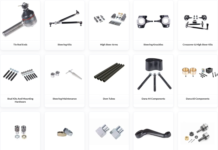In the fast-evolving landscape of modern manufacturing, precision has become the defining factor separating good production from great. As industries embrace the Fourth Industrial Revolution commonly referred to as Industry 4.0 the fusion of digital technologies with traditional manufacturing is reshaping the very foundations of how products are designed, fabricated, and delivered. From aerospace and automotive to medical devices and consumer electronics, the demand for ultra-precise, data-driven manufacturing processes is higher than ever. However, achieving this level of accuracy is not merely about deploying cutting-edge machines or adopting advanced software systems; it requires a workforce that’s equally advanced—skilled, adaptable, and digitally fluent.
The Transformation of Precision Manufacturing
Precision manufacturing, once a discipline dominated by mechanical craftsmanship and manual measurements, has now transformed into a data-centric ecosystem powered by automation, AI, IoT, and simulation tools. Smart factories are leveraging connected sensors, real-time analytics, and digital twins to predict outcomes, minimize errors, and optimize efficiency. This transformation doesn’t just enhance productivity—it redefines quality control. Today, a single misalignment of a few microns can determine the success or failure of an entire production cycle. As a result, engineers and technicians must not only understand the mechanical aspects of production but also possess digital literacy to interpret, analyze, and act on the massive data streams generated by modern manufacturing systems.
In this new reality, companies can no longer rely solely on traditional on-the-job training or legacy skill sets. The manufacturing workforce needs to evolve in sync with the technologies driving change. The pressing question is no longer if training is necessary, but what kind of training will equip teams for success in the digital era.
Digital Fluency: The Foundation of the Next-Gen Workforce
Digital fluency—the ability to use, interpret, and apply digital tools seamlessly—is the cornerstone of next-generation manufacturing. Engineers are now expected to navigate advanced CAD/CAM software, integrate machine learning algorithms for predictive maintenance, and analyze performance data in real-time. Operators who once relied on manual gauges now interact with digital dashboards that monitor thousands of process variables simultaneously.
But digital fluency isn’t limited to knowing how to use a tool; it’s about understanding its broader implications in a production ecosystem. For instance, knowing how to simulate tolerance stack-ups or use a digital twin to anticipate assembly deviations can prevent costly rework and ensure product integrity. This shift means that continuous learning is no longer optional—it’s the backbone of sustainable manufacturing excellence.
Geometric Dimensioning and Tolerancing: The Backbone of Precision
One area where precision truly meets digital transformation is geometric dimensioning and tolerancing (GD&T). As production technologies advance, tolerances become tighter, and the margin for error narrows dramatically. GD&T provides a universal design language that ensures all stakeholders—from design engineers to machinists—understand exactly how a part should fit and function. Without a deep understanding of GD&T principles, even the most advanced machines can produce inconsistent results.
That’s why structured, professional training in GD&T is essential for any company aiming to thrive in precision manufacturing. Programs such as gd&t training offered by Sigmetrix provide a robust foundation for understanding and applying these principles. These courses go beyond theory, integrating practical applications that align directly with real-world production challenges. By mastering GD&T, engineers can communicate design intent clearly, reduce ambiguity, and ensure that products meet specifications the first time, every time.
Moreover, as digital tools increasingly automate design and inspection processes, the role of GD&T becomes even more critical. CAD models, metrology equipment, and coordinate measuring machines (CMMs) rely on precise geometric definitions to perform automated checks. This integration of GD&T with digital manufacturing technologies creates a seamless bridge between design and production, enabling manufacturers to maintain consistency, quality, and traceability throughout the product lifecycle.
The Role of Data Analytics and AI in Precision Manufacturing
The digital age has introduced an entirely new layer of capability in manufacturing: data-driven decision-making. Artificial intelligence and advanced analytics can now detect inefficiencies and deviations in real time, often before they become visible to human operators. Predictive maintenance algorithms forecast when machines need service, while machine learning models optimize process parameters for maximum precision.
However, these technologies are only as powerful as the people who manage them. Engineers must understand not just how to interpret the data but also how to act on it. Training in data literacy—how to collect, clean, and analyze manufacturing data—is becoming just as important as technical machining skills. As a result, hybrid professionals who combine mechanical knowledge with data analytics are in exceptionally high demand. These individuals bridge the gap between physical production and digital intelligence, helping companies achieve both efficiency and innovation.
Bridging the Skills Gap through Continuous Learning
One of the biggest challenges facing modern manufacturers is the widening skills gap. While technology evolves at an exponential rate, workforce training often lags behind. Many experienced machinists and engineers were educated in a pre-digital era, where manual drafting and conventional machining dominated. Now, they must adapt to an environment driven by AI, automation, and advanced simulation.
To close this gap, organizations are investing heavily in upskilling and reskilling initiatives. Digital academies, virtual training environments, and certification programs are becoming integral to workforce development. These initiatives not only teach new technical skills but also foster a culture of innovation and adaptability. In this new paradigm, learning is not confined to classrooms; it’s embedded into everyday workflows. Interactive e-learning platforms, virtual reality simulations, and collaborative digital tools enable workers to practice and perfect skills in a risk-free, engaging environment.
Human-Centric Automation: Balancing People and Machines
While automation and robotics continue to redefine production efficiency, the human role remains irreplaceable. Precision manufacturing still requires the intuition, problem-solving, and creative insight that only humans can provide. The most successful factories are those that integrate human expertise with machine intelligence, creating symbiotic systems where each complements the other.
Training, therefore, must focus not only on technical skills but also on soft skills—critical thinking, communication, and collaboration. As teams work alongside robots and AI systems, understanding how to manage, monitor, and troubleshoot automated systems becomes crucial. The future of precision manufacturing lies in this balance—humans guiding machines, machines enhancing human potential.
The Future: Adaptive Learning and Smart Skill Development
Looking ahead, training in precision manufacturing will increasingly leverage the same technologies that power production itself. Adaptive learning platforms will use AI to personalize training experiences, identifying individual skill gaps and tailoring content accordingly. Digital twins of production environments will allow trainees to experiment and learn without disrupting real operations.
Furthermore, cross-disciplinary education will become standard. Future engineers will need to understand not only mechanical design but also data science, cybersecurity, and sustainability. The ability to integrate knowledge across domains will define the leaders of next-generation manufacturing. As manufacturers embrace these advancements, communicating innovation and thought leadership becomes just as important as implementing it. Partnering with a digital PR service can help companies showcase their technological milestones, highlight workforce development success stories, and build authority in the global Industry 4.0 conversation.
Conclusion
Precision manufacturing in the digital age is more than a technological evolution—it’s a human revolution. Success now depends on a workforce that’s skilled, agile, and digitally empowered. The manufacturers that prioritize workforce development today will define the standards of excellence tomorrow. Precision is no longer just about measurements—it’s about mastering the intersection of human skill and digital innovation.





























